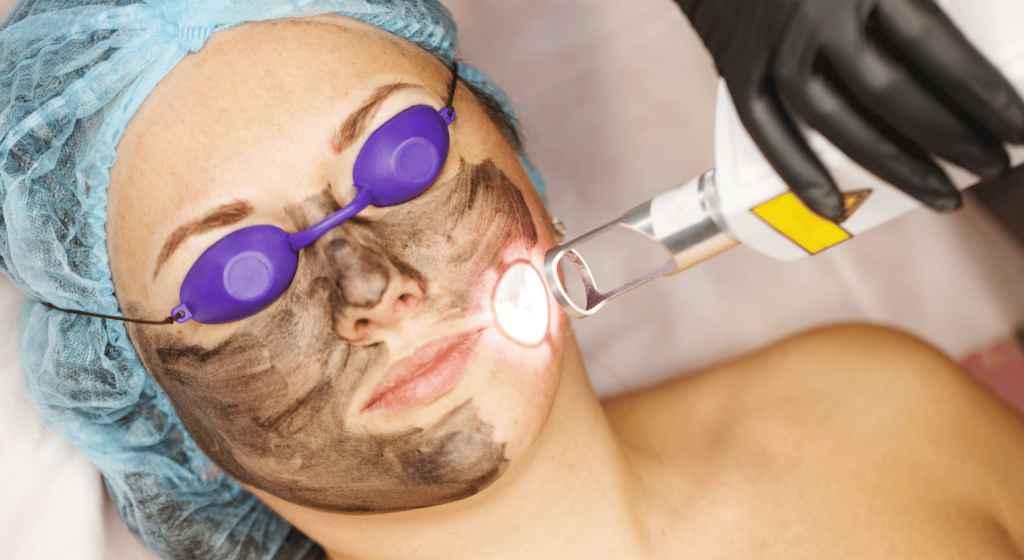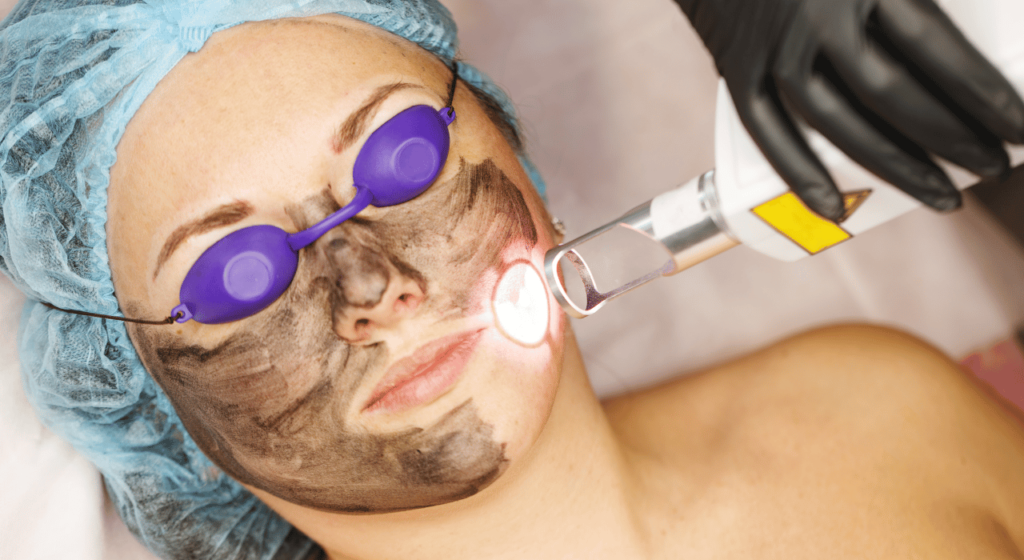When it comes to achieving radiant, youthful skin, non-invasive treatments have become increasingly popular. Two of the most sought-after options are Carbon Laser Facials and Chemical Peels with Retinol. Each of these treatments offers distinct benefits, and the right choice depends on your skin type, concerns, and goals. Understanding how these treatments work and their respective advantages can help you make an informed decision.
What Is Carbon Laser Treatment?
Which is better, carbon laser or chemical peeling (أيهما أفضل الليزر الكربوني أم التقشير الكيميائي), Carbon Laser often referred to as the "Hollywood Peel," is a non-invasive laser treatment designed to rejuvenate the skin. The procedure involves applying a layer of liquid carbon onto the face, allowing it to penetrate the pores. Once the carbon sets, a laser is passed over the skin, targeting the carbon particles and exfoliating the outer layer of skin. This treatment is known for its ability to remove dead skin cells, reduce oiliness, minimize pores, and promote collagen production. It’s especially beneficial for those dealing with acne-prone skin, dullness, or early signs of aging.

Understanding Chemical Peeling with Retinol:
Chemical peeling with retinol combines the exfoliating power of a chemical peel with the deep-penetrating benefits of retinol, a form of vitamin A. This treatment involves applying a chemical solution to the skin, which helps in peeling off the outermost layer. Retinol enhances the process by stimulating cell turnover and boosting collagen synthesis. The result is smoother, brighter skin with improved texture and tone. Chemical peels with retinol are often used to treat pigmentation issues, fine lines, and uneven skin texture.
Benefits and Effects on the Skin:
Both treatments offer rejuvenating benefits but in different ways. Carbon Laser is particularly effective for oily and acne-prone skin. It cleanses the pores, reduces blackheads, and gives an instant glow with little to no downtime. It’s also gentler, making it suitable for those looking for a quick refresh.
On the other hand, chemical peeling with retinol dives deeper into the skin. It promotes more intensive exfoliation, targets pigmentation, and significantly improves the appearance of fine lines and sun damage over time. However, it may cause peeling, redness, and sensitivity for a few days following the treatment.
Suitability for Different Skin Types:
Choosing between these two treatments largely depends on your skin type and concerns. Carbon Laser is typically well-suited for individuals with oily, acne-prone skin or those seeking a maintenance treatment with minimal side effects. It's gentle enough for sensitive skin, provided there is no active inflammation.
Chemical peels with retinol are more appropriate for mature skin or individuals with significant sun damage, pigmentation, or textural irregularities. However, they may not be suitable for highly sensitive skin or individuals with certain skin conditions, as the chemical agents can cause irritation.
Frequency and Results Over Time:
Carbon Laser treatments are often recommended as a series for best results, although many people notice improvement after a single session. The glow and smoothness achieved tend to last for a few weeks, making it a great option for regular skin maintenance.
In contrast, chemical peeling with retinol can have longer-lasting effects, especially after multiple sessions spaced a few weeks apart. Because of the deeper exfoliation and stimulation of collagen, results tend to build over time, leading to a more refined and youthful complexion in the long run.
Conclusion:
In summary, both Carbon Laser and Chemical Peeling with Retinol are powerful skin rejuvenation treatments, each offering unique benefits. Carbon Laser is ideal for those seeking a gentle, refreshing glow with minimal downtime, especially effective for oily or acne-prone skin. On the other hand, Chemical Peeling with Retinol provides deeper, long-term improvement in skin tone, texture, and signs of aging, making it more suitable for mature or sun-damaged skin. Choosing the right treatment depends on your individual skin concerns and goals. By understanding what each method offers, you can take a confident step toward healthier, more radiant skin.

